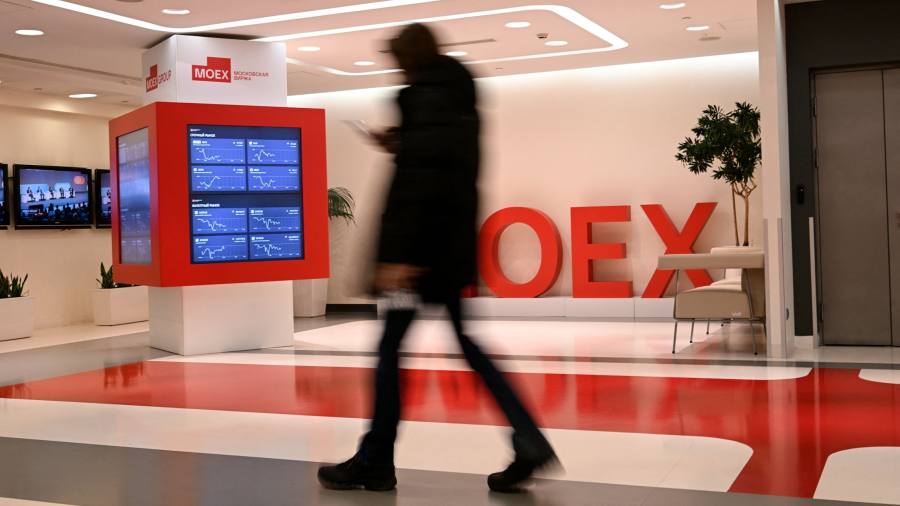Russia’s stock market has climbed to its highest level in more than a year as domestic retail investors with nowhere else to go snap up the dividend-paying stocks that sold off heavily following the invasion of Ukraine.
A rise in dollar terms of more than 10 per cent since a year low in October has pushed the Moex index to levels last hit in early April 2022, just over a month after President Vladimir Putin’s so-called special military operation against Ukraine sent Russia’s equity market into freefall.
The market’s partial rebound over the past seven months has come despite the imposition of western sanctions designed to cripple Russia’s financial system. The Kremlin responded to the measures by blocking most foreign traders from exiting their investments and capping the amount of money Russians can stash in foreign bank accounts.
“Money is trapped”, said Jacob Grapengiesser, chief investment officer at fund manager East Capital. “Where do you put it but on the exchange?”
Deprived of investment opportunities abroad, Russians have piled their savings into the likes of Lukoil, Gazprom and Sberbank, which combined account for about 40 per cent of the stock market’s total value.
All three have recently rewarded shareholders to the tune of billions of roubles, having paused dividend payments in the months following the invasion and despite a sharp fall in profits at Sberbank last year. The Moex plunged in June after Gazprom cancelled its dividend for the first time since 1998; three months later the gas major’s shareholders approved one of the biggest dividends in Russian corporate history.
“Russian retail investors have always been about dividends,” said, a Moscow investment bank.
A blogger called Investmeal says his portfolio of mostly financial and energy stocks had returned 16.2 per cent in total since the end of January. Another Russian blogger said last month that although “the domestic market is still a hostage of geopolitics”, a “strong upward trend has been formed. What to do in this case, run and sell shares? Of course not.”
The Russian stock market’s recent rally bears some resemblance to the surprisingly strong performance of the Borsa Istanbul 100 last year, Grapengiesser added.
“The Turkish market was doing really well because of indirect capital controls” even as inflation surged, he said. “For Russian businessmen it’s also expected that they should keep their money in the country, whereas earlier they would move it out”.
The market was also much cheaper than before the war started, tempting Russia’s retail investors back in. Smaller shareholders had helped push the Moex to a record high in October 2021.
Russia’s economy has also held up better than expected, even if analysts say official data do not tell the whole story. Russia’s GDP shrank 2.1 per cent in 2022, according to the Rosstat federal statistics service, far less than the 11.2 per cent drop forecast by the World Bank last April.
For many domestic Russian retail investors, “nothing has changed compared to before the war started, the economy is doing OK”, said one investor with knowledge of the local market.
Big dividend payers like state-owned Sberbank, whose shares are up 67 per cent in the year to date, are “attractive to most Russians and now they’re some of the few investment options available”.
Even so, foreign investors not banned by sanctions have kept well clear of the Moex since an exodus last February, when central bank figures show non-residents shed about Rbs170bn ($2.2bn) worth of Russian stocks. Trading volumes on the Moex slumped 41 per cent year on year in 2022.
There is a “close-to-zero chance” that foreigners whose Russian holdings have in effect been frozen will be allowed to sell out of their positions, Donets said. “Perhaps there could be an artificial settlement, some kind of exchange for holdings frozen for Russian investors outside of Russia.”
Whatever happens, the Moex is unlikely to touch the highs of October 2021 any time soon, Donets added.
Read the full article here



